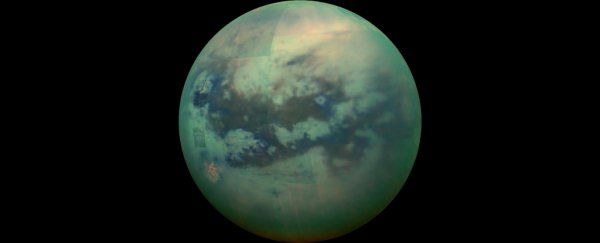Titan is the sixth and largest of Saturn's planet-like moons, with a radius a little larger than that of the planet Mercury, but with less than half of its mass.
It's remarkable not only for its size, but for the fact it is the only moon in the Solar System to have a dense atmosphere that supports weather systems similar to Earth's, complete with liquid pooling on its surface.
Known to astronomers since its discovery by Dutch astronomer Christiaan Huygens in 1655, its dense covering of orange fog has made it difficult to study. Only with the depositing of a probe from the Cassini–Huygens research mission in early 2005 did researchers get some sense of what Titan's surface was like.
Today it's understood that Titan has an atmosphere that's a little denser than Earth's. It consists mostly of nitrogen, with clouds of methane and a fog of various organic particles.
The moon's surface has rough and smooth patches, seemingly refreshed by volcanic forces in the past, with active features like electrically charged sand dunes and deep lakes of cold liquid hydrocarbons.
These pools of liquid hydrocarbon have inspired speculation that complex organic – and even biological – chemistry might be possible on Titan.
In 2019, data from the Cassini mission was used to create a map of Titan's features, detailing mountains thought to be made of water ice, vast flat plains, and small liquid bodies towards the poles.
 The first global geologic map of Titan. (NASA/JPL-Caltech/ASU)
The first global geologic map of Titan. (NASA/JPL-Caltech/ASU)
Will there be more missions to Titan?
NASA is planning missions to this odd little world in coming years in the hopes of learning more about its atmosphere, weather systems, and potentially even a unique biosphere.
A mission planned to arrive in 2034 will carry a car-sized quadcopter called Dragonfly to move quickly across Titan's landscape.
All topic-based articles are determined by fact checkers to be correct and relevant at the time of publishing. Text and images may be altered, removed, or added to as an editorial decision to keep information current.
